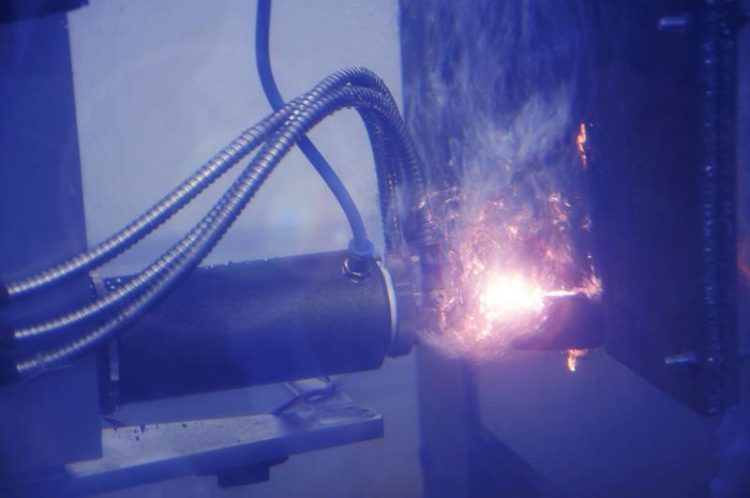Efficient reactor dismantling by laser beam cutting?

Underwater laser cutting offers enormous potential for the dismantling of reactor vessels. Photo: LZH
This new system is supposed to enable the direct dismantling of nuclear facilities (reactor pressure vessels). Laser beam cutting offers significant advantages compared to conventional cutting methods, such as water jet cutting or sawing techniques.
Above all, the binding of the kerf material on the exit side is a major advantage of the laser process. The expense for the final cleaning of the water basin floor is significantly reduced, as the amount of secondary or technology waste is significantly lower compared to water jet or sawing techniques.
The disposal of this waste is time-consuming and costly. In addition, sawing techniques are prone to jamming of the tool. This cannot occur with laser beam cutting. Thus, the process times could be shortened. The laser beam cutting would therefore represent a much cheaper alternative for the dismantling of the reactor components.
About AZULa:
The project “Automated separation of reactor pressure vessel installations using underwater laser technology” (AZULa) is carried out together with the Orano GmbH. AZULa is sponsored by the Federal Ministry of Education and Research (BMBF) under grant number 15S9408 by the project coordinator Gesellschaft für Anlagen- und Reaktorsicherheit gGmbH (GRS).
There are two figures for this press release.
Laser Zentrum Hannover e.V.
Dipl.-Biol. Lena Bennefeld
Abteilung Kommunikation
Hollerithallee 8
D-30419 Hannover
Germany
Tel.: +49 511 2788-238
Fax: +49 511 2788-100
E-mail: l.bennefeld@lzh.de
Internet: www.lzh.de
Media Contact
All latest news from the category: Process Engineering
This special field revolves around processes for modifying material properties (milling, cooling), composition (filtration, distillation) and type (oxidation, hydration).
Valuable information is available on a broad range of technologies including material separation, laser processes, measuring techniques and robot engineering in addition to testing methods and coating and materials analysis processes.
Newest articles

Trotting robots reveal emergence of animal gait transitions
A four-legged robot trained with machine learning by EPFL researchers has learned to avoid falls by spontaneously switching between walking, trotting, and pronking – a milestone for roboticists as well…

Innovation promises to prevent power pole-top fires
Engineers in Australia have found a new way to make power-pole insulators resistant to fire and electrical sparking, promising to prevent dangerous pole-top fires and reduce blackouts. Pole-top fires pose…

Possible alternative to antibiotics produced by bacteria
Antibacterial substance from staphylococci discovered with new mechanism of action against natural competitors. Many bacteria produce substances to gain an advantage over competitors in their highly competitive natural environment. Researchers…





















